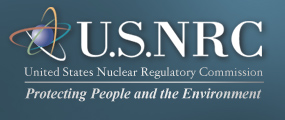Resolution of Generic Safety Issues: Item B-72: Health Effects and Life-Shortening from Uranium and Coal Fuel Cycles (Rev. 1) ( NUREG-0933, Main Report with Supplements 1–35 )
DESCRIPTION
Practice in health impact assessments at the time of identification of this issue was to convert radiation exposure estimates into estimates of health effects, such as cancer deaths, illness, and life shortening. However, the models that were being used, such as those in WASH-1400, GESMO, NRC case-related testimony, and EPA assessments, all suffered from similar weaknesses. A major common weakness, which appeared amenable to solution, was related to the correct treatment of competing risks among populations with life expectancies, age, and sex distributions that vary with time. Since the staff was attempting to assess health effects in the future (e.g., year 2000 and beyond), it was reasonable to expect significant changes in current population statistics. To make such an assessment, a demographic model was required which extrapolated population into the future, correctly allowing for competing risks of mortality from various causes (e.g., accidents, heart disease, and cancer). Failure to do so results, for example, in hypothetical cancer deaths for people who would statistically die from other causes. In the absence of better predictive models, it was not possible to even evaluate the uncertainty associated with the use of the current simplified methods for estimating health effects and consequent life-shortening. Uncertainties in the use of current models were greatly magnified when attempting to make comparisons of health effects for the coal and nuclear fuel cycles.
At the time this issue was added to NUREG-0933 in 1983, health effects models generally were used for estimating long-term impacts. Chronic exposure may be the primary determinant of the number of deaths for a given period for a given pollutant. However, in the case of nonradiological pollutants from the coal fuel cycle, short-term fluctuations leading to acute exposures may determine the time of death and consequent life shortening. Evaluations of the coal fuel cycle generally failed to account for short-term mortality, disease, and illness. In addition, short-term effects from chemical pollutants were generally dependent on the prior history of chronic (long-term) exposure.
Models generally assumed linear dose-response relationships even when evidence existed for real or practical thresholds, or where experimental data supported a nonlinear dose response relationship.
This NUREG-04713 task involved the development of models to address these problems so that health effects (morbidity and mortality) could be assessed for both the coal and uranium fuel cycles as completely as data permitted and on a comparable basis.
CONCLUSION
NRC staff stated in the main report of NUREG-0933 published in 1983 that the results of Item A-20 would be used in this Licensing Issue.412 As a part of the improvements to NUREG-0933, the NRC staff clarified in SECY-11-0101, "Summary of Activities Related to Generic Issues Program," dated July 26, 2011,1967 that the Generic Issues Program will not pursue any further actions toward resolution of licensing and regulatory impact issues. Because licensing and regulatory impact issues are not safety issues by the classification guidance in the legacy Generic Issues Program, these issues do not meet at least one of the Generic Issues Program screening criteria and do not warrant further processing in accordance with Management Directive 6.4, "Generic Issues Program," dated November 17, 2009.1858 Therefore, this issue will not be pursued any further in the Generic Issues Program.
REFERENCES
|


